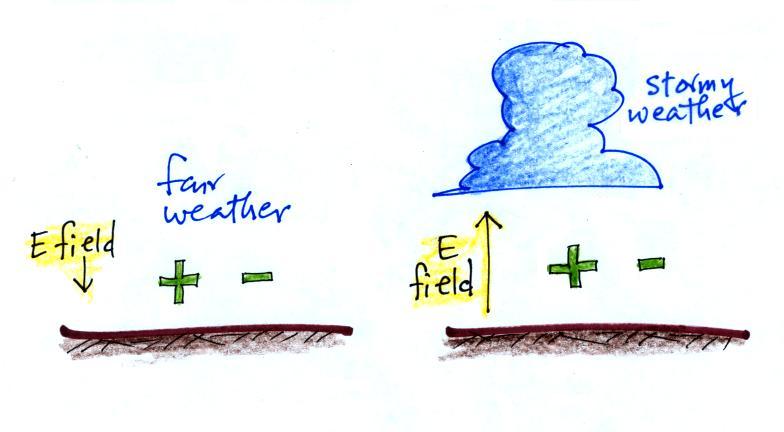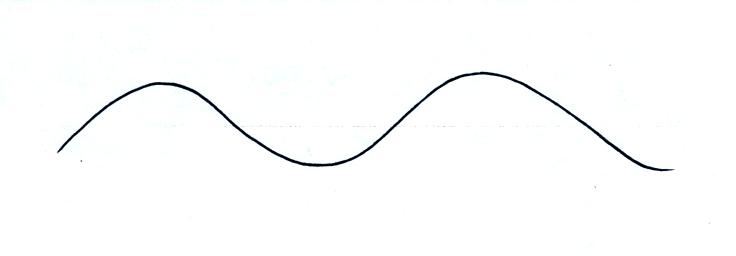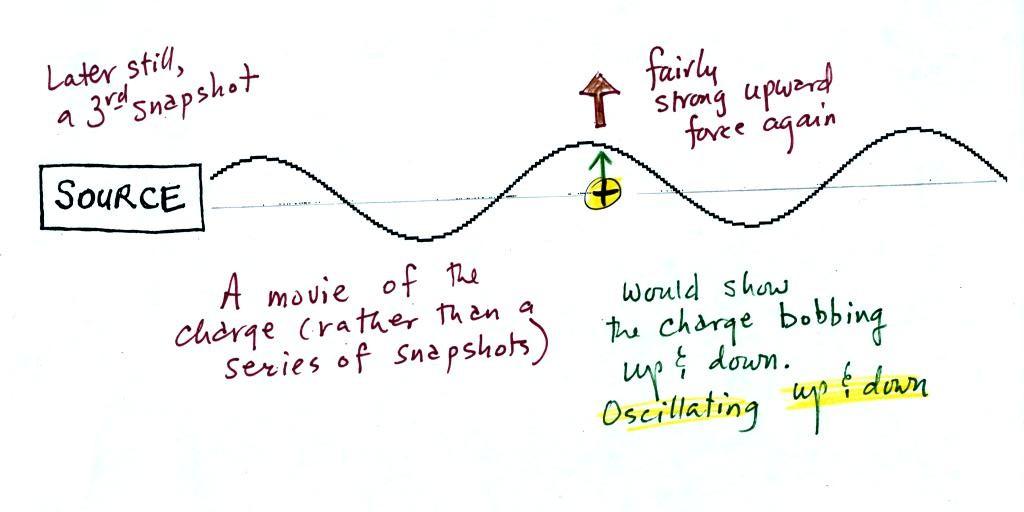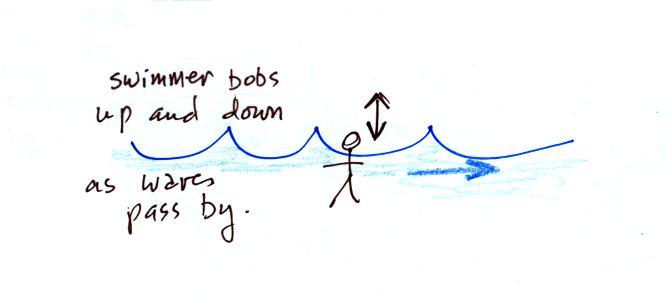We're ready to tackle
electromagnetic radiation, the most
important of the four energy transport processes (it's the most
important because it can carry energy through empty space). We'll
spend
the next two lectures on this topic.
To really understand EM radiation you first need to know
something
about electric
fields. To understand electric fields we need to quickly review a
basic rule concerning static electricity.
I have tried a short "static electricity"
demonstration in the classroom version of this course with mixed
success. The demonstration consists
of blowing bubbles toward a Van de Graaff generator. The metal
ball at the top of the generator gets charged up with electricity (I'm
not sure what polarity it is). If the bubbles can pick up the
same polarity of charge (and this is the difficult part of the
demonstration) the bubbles will be repelled by the charge on the dome
of the Van de Graaff generator. Here's a
video that shows what is supposed to happen.
Electric field arrows (or just the E field) show you
the direction and
give you an idea of
the strength of the electrical force that would be exerted on a
positive charge
located at that point.

In this figure (p. 59 in the
ClassNotes) a positive charge has been placed at 3 locations around a
center charge. The electric field arrow shows the direction of
the force that would be exerted on each of the charges. The force
arrow is shown in blue.
The E field arrows tell you what will happen to a + charge. You can use the
arrows to determine what will happen to a - charge also.
For a negative charge the force will point in a direction opposite the
E field arrow.
Here's a figure to test your understanding.
The direction and strength of the E
field near the ground during fair weather and under a thunderstorm are
shown. Show the directions of the forces that would be exerted on
the charges shown in the figure. You'll find the answer at the end of
today's notes.
We'll use electric field arrows to illustrate and explain the
transport of energy in the form of electromagnetic radiation.
We imagine turning on a source of EM radiation and then
a
short time
later we take a snapshot. The EM radiation is a wavy pattern of
electric and magnetic field arrows. We'll ignore the magnetic
field lines. The E field lines sometimes point up, sometimes
down. The pattern of electric field arrows repeats itself.
Textbooks often represent EM radiation with a wavy line like shown
above. But what does that represent?
The wavy line just connects the
tips of a bunch of electric
field
arrows.
Now back to the earlier picture. Note the + charge near the right
side of the picture. At the time
this
picture was taken an upward pointing electric field arrow shows that
the EM radiation exerts a fairly strong upward force
on
the
+
charge.
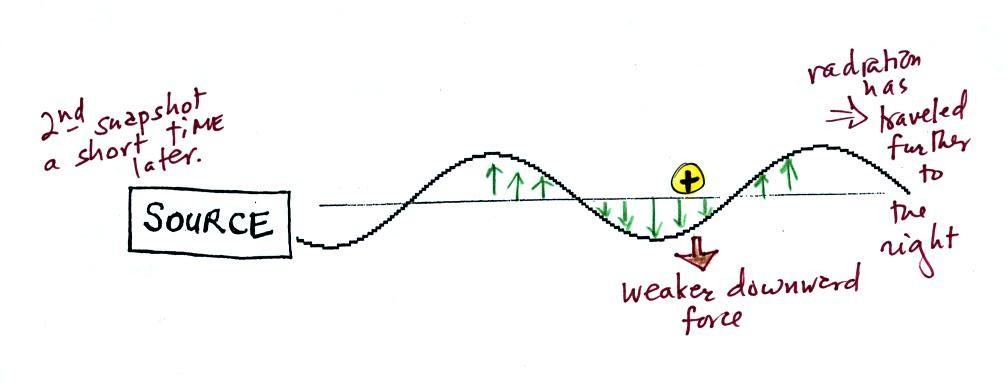
This picture was taken a short time after the first snapshot when
the radiation
had
traveled a little further to the right. The EM radiation now
exerts a somewhat weaker downward force on the + charge.
The + charge is now being
pushed upward again. A
movie
of
the +
charge, rather than just a series of snapshots, would show the
charge
bobbing up and down much like a swimmer in the
ocean would do as waves passed by.
The wavy pattern used to
depict EM radiation can be described spatially in terms of its
wavelength,
the distance between identical points on the pattern. By
spatially we mean you look at different parts of the radiation at one
particular instant frozen in time.
Or you can
describe the radiation temporally
using the frequency of oscillation
(number of up and down cycles completed by an oscillating charge per
second). By temporally we mean you at one particular point for a
certain period of time.
EM radiation can be created when
you cause a charge to move up and
down.
If you move a charge up and down slowly (upper left in the
figure above) you would produce long wavelength radiation that would
propagate out to the right at the speed of light. If you move the
charge up and down more rapidly you produce short wavelength radiation
that propagates at the same speed.
Once the EM radiation encounters the charges at the right side of
the
figure above the EM radiation causes those charges to oscillate up and
down. In the case of the long wavelength radiation the charge at
right oscillates slowly. This is low frequency and low energy
motion. The short wavelength causes the charge at right to
oscillate more rapidly - high frequency and high energy.
These three characteristics: long wavelength / low frequency / low
energy go
together. So do short wavelength / high frequency / high energy.
Note that the two different types of radiation both propagate at the
same speed.
The
following figure illustrates how energy can be
transported from one
place to another (even through empty space) in the form of
electromagnetic (EM) radiation.
You add energy when you cause an
electrical charge to move up and down
and create the EM radiation (top left).
In the middle
figure, the EM
radiation then travels out
to the
right (it could be through empty space or through something like the
atmosphere).
Once
the EM radiation encounters an electrical charge at another location
(bottom right),
the energy reappears as the radiation causes the charge to move.
Energy
has been transported from left to right.
This is really just a partial list
of some of the different
types of EM
radiation. In the top list, shortwave length and high energy
forms of EM radiation are on the left (gamma rays and X-rays for
example). Microwaves and radiowaves are longer wavelength, lower
energy forms of EM radiation.
We will mostly be concerned with just ultraviolet light (UV),
visible
light (VIS), and infrared light (IR). Note the micrometer
(millionths of a meter) units used for wavelength for these kinds of
light. The visible
portion of the spectrum falls between 0.4 and 0.7 micrometers (UV and
IR light are both invisible). All of the vivid colors
shown above
are just EM radiation with slightly different wavelengths. When
you see all of these colors mixed together, you see white light.
Here's the answer to the question found earlier in the notes about
electric fields and forces at the earth's surface
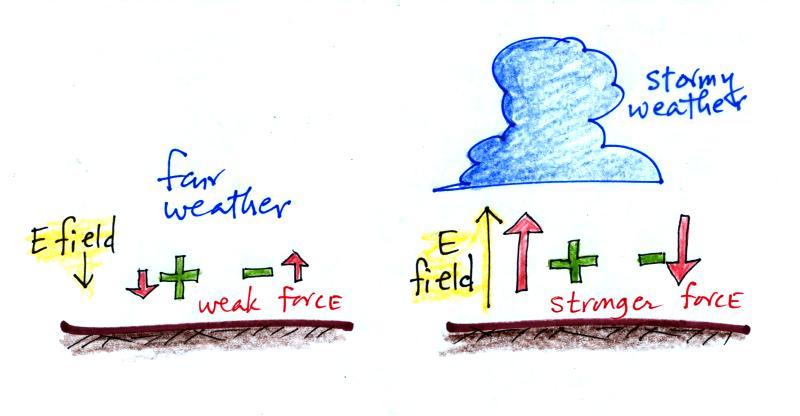
Electrical forces will move
positive charges in the direction of the electric field. Negative
charges will move in a direction opposite the electric field.




